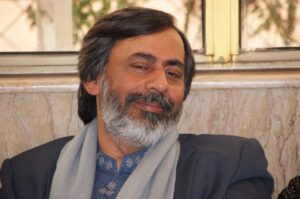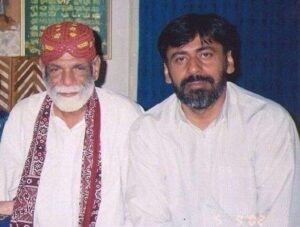Cure Panic Attacks
Introduction
Panic attacks are intense and sudden surges of fear or discomfort that can be overwhelming. Understanding panic attacks, their causes, effective management strategies, and exploring innovative remedies like “The Ultimate Remedy,” an audio therapy, are essential in addressing this condition.
Introduction to Panic Attacks
Panic attacks are characterized by a sudden onset of fear or extreme discomfort, typically reaching a peak within minutes. These episodes can occur unexpectedly or be triggered by specific situations. Understanding these attacks is key to managing them effectively.
Understanding Panic Attacks
Panic attacks manifest through a variety of physical and psychological symptoms:
- Physical Symptoms: These can include heart palpitations, chest pain, shortness of breath, dizziness, and trembling.
- Psychological Symptoms: Feelings of unreality (derealization), fear of losing control, fear of dying, or a sense of impending doom.
Recognizing these symptoms is crucial for diagnosis and treatment.
Causes of Panic Attacks
The exact causes of panic attacks are not fully understood, but several factors contribute:
- Genetics: A family history of anxiety disorders can increase the risk.
- Environmental Triggers: Stressful life events, such as the death of a loved one or major life changes.
- Medical Factors: Certain medical conditions and substance use can trigger panic attacks.
- Mental Health Conditions: Panic attacks are commonly associated with conditions like anxiety disorders.
Management of Panic Attacks
Managing panic attacks involves various strategies:
- Cognitive Behavioral Therapy (CBT): This therapy helps identify and change negative thought patterns that trigger panic attacks.
- Medication: Antidepressants and anti-anxiety medications can help manage symptoms.
- Lifestyle Changes: Regular exercise, adequate sleep, and a balanced diet can reduce the frequency of attacks.
- Mindfulness and Relaxation Techniques: Practices like deep breathing and meditation can help calm the mind.
The “Ultimate Remedy” An Alternative Approach
“The Ultimate Remedy” presents a novel approach to complementing traditional treatments for panic attacks. This unique form of audio therapy uses the power of sound and intention to promote relaxation and alleviate symptoms.
How to Use The Ultimate Remedy
Download the Audio: Access The Ultimate Remedy audio from our website. Links are available for easy download.
Listen as Instructed: Follow the guidelines for listening to the audio to maximize its benefits.
Support and Testimonials: For any queries or further information, contact help@mastmasthealers.com. Testimonials can provide insights into others’ experiences with the therapy.
Benefits of The Ultimate Remedy
Soothing Sound Frequencies: The audio uses specific frequencies known for their calming effects.
Intention-Driven Approach: Combining sound with focused intention enhances the therapeutic experience, potentially reducing the frequency and intensity of panic attacks.
Conclusion
Panic attacks, though daunting, can be effectively managed with the right combination of therapy, medication, lifestyle changes, and innovative approaches like The Ultimate Remedy. Embracing a comprehensive approach is key to reducing the impact of panic attacks and improving overall well-being.
Happy Patients
Years since day one
%
Satisfaction
Testimonial
How to Listen to the Ultimate Remedy:
Download the Ultimate Remedy audio from our website or app. It’s free and accessible to all.
- Choose a quiet, comfortable space where you won’t be disturbed.
- Close your eyes and visualize yourself in the presence of your higher power or the essence of the universe.
- Listen to the audio with great concentration and closed eyes.
- After the audio is finished, open your eyes and take half a glass of water.
- Close your eyes again and say “your name” or a word that represents your belief (such as “God”, “Universe”, or “Love”) three times in your heart.
- Drink the water with closed eyes in three sips.
- For optimal results, it’s recommended to listen to the Ultimate Remedy three times a day (morning, evening, and before sleeping) for seven consecutive days.
About the Creator – Syed Safdar Hussain Bukhari
Introduction and Early Life
Syed Safdar Hussain Bukhari, also known as Kakian Wali Sarkar, was a unique example of kindness, devotion, and tenacity. Born on May 6th, 1940, he dedicated his life to serving humanity and providing relief to those suffering from various ailments.

Social Work and Spiritual Journey
Between 1960-1980, he engaged in social work by undertaking road repairs, establishing schools, and arranging medical supplies in Lilla Town. In 1990, he left his ancestral home and family wealth to move to Lahore, where he comforted the depressed and saddened through mystic dance and music.
The Ultimate Remedy
In 1998, Baba Bukhari’s research led to the discovery of “The Ultimate Remedy,” a blessed audio that he believed could cure physical, psychological, spiritual, and supernatural problems. The remedy involved listening to the audio three times a day for seven consecutive days, followed by a specific water ritual. This method claimed to cure various ailments, including coronavirus, AIDS, cancer, drug addiction, worldly problems, and psychological issues.
Legacy and Death
Baba Bukhari’s research and unconditional love left a lasting impact on humanity, providing positive thinking, peace of mind, health, fearless life, and an example of love and compassion. He passed away on February 8th, 2005, leaving behind a legacy of healing through “The Ultimate Remedy.”

His spiritual successor is Syed Baba Jaan
According to Baba Bukhari (RA), his spiritual successor is Mr. Shakir Uzair, also known as Syed Baba Jaan . As the chosen heir to Baba Bukhari’s spiritual legacy, Syed Baba Jaan carries forward the teachings and practices that have been passed down through generations. Dedicated to serving humanity and promoting healing, Mr. Shakir Uzair continues to spread the message of love, compassion, and the transformative power of the Ultimate Remedy to help countless individuals in their journey towards holistic wellness and personal growth.

